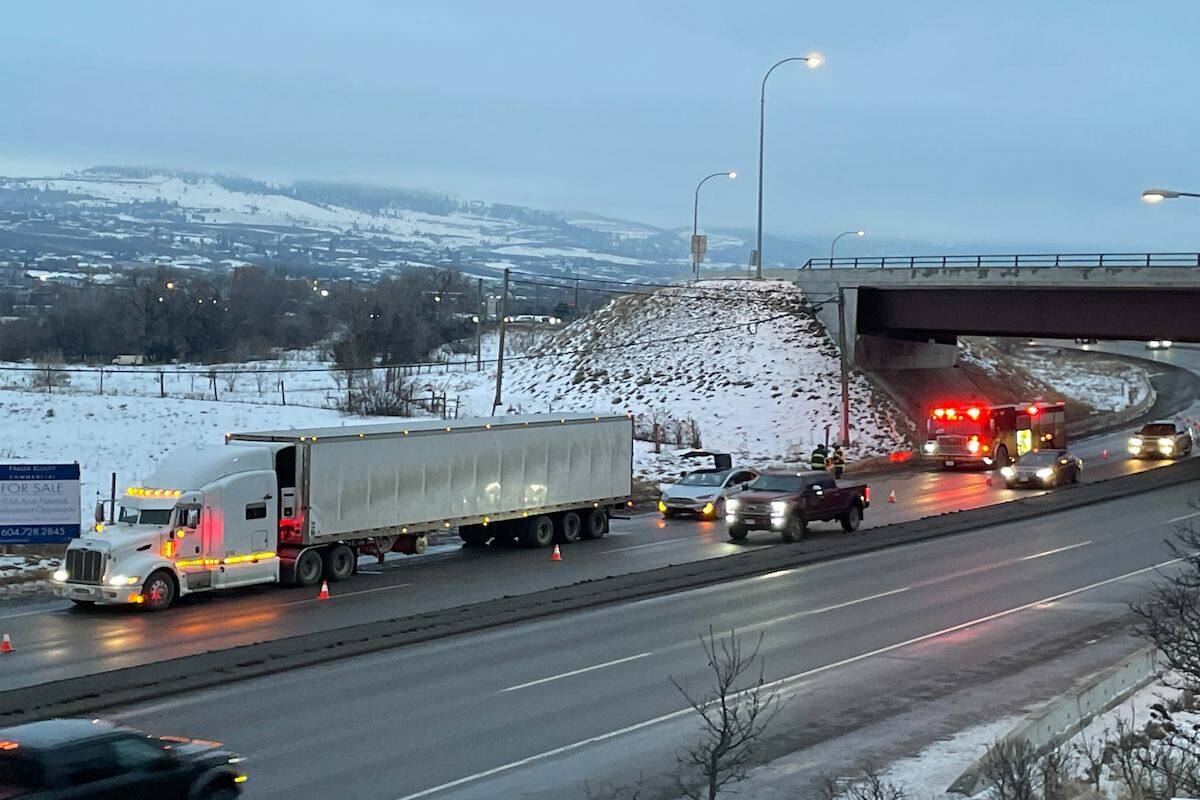On Feb. 27, Kelowna RCMP closed the highway running straight through the fastest growing region of Canada for about eight hours starting in the noon hour after discovering and later defusing what turned out to be a genuine explosive device.
While questions continue to surround the incident, it underscored what many locals and visitors to the Central Okanagan, a region of nearly 230,000, already know: getting through Kelowna on Highway 97 can be trying, even painful during the best of times, given the limited options to bypass it.
BC Liberal MLA Norm Letnick, who represents the region along with fellow BC Liberals Renee Merrifield (Kelowna-Mission) and Ben Stewart (Kelowna West), knows this feeling well.
“When you talk to people who come to visit Kelowna from Prince George or from (Vancouver) Island or Vancouver, you hear all sorts of positive things about the Okanagan — ‘beautiful, great wine, nice people,’ but then you hear, ‘but, your traffic sucks.’”
The Central Okanagan Integrated Transportation Strategy, itself part of the Central Okanagan Planning Study, tries to change that by improving the primary highway corridor through the Central Okanagan not just for vehicles, but all traffic users in line with planning and environmental needs.
Geographically, the plan’s study area is almost identical with the boundaries of Kelowna Census Metropolitan Area, the fastest growing CMA in all of Canada between 2016 and 2021.
The new strategy recognizes this status, but Letnick not only laments its delayed time-line, but also the possibility that it won’t come with the necessary funds.
RELATED: B.C. puts $479M into TransLink to keep fares low, avoid service cuts
“It’s very clear to those of us in the Okanagan, that the government is spending a lot of money in other parts of the province and not spending a lot of money in our part of the province,” Letnick said.
Politics, of course, plays a role. Whereas the BC Liberals improved transportation in the region when in government, it has been nothing but “crickets” from the current government, Letnick said.
Letnick’s fear that the proposed plan won’t come without any money is not without basis.
The Ministry of Transportation and Infrastructure’s Service Plan released in February 2023 shows no major investments in the Central Okanagan or for the Okanagan as a whole for 2023/24 to 2025/26. However, the recent provincial budget is putting money toward repairing and improving Highway 5, one of the major routes into Okanagan, after the historic 2021 floods and landslides.
It’s not clear yet when the ministry will release its plan for the Central Okanagan. It said in an emailed statement that it recognizes the “importance of safe, affordable, and accessible transportation options “for people in the region.
“The ministry continues to work closely with local governments, Indigenous communities, and the Regional District of the Central Okanagan to develop the Central Okanagan Integrated Transportation Strategy,” it reads.
Letnick said he and other MLAs from the region will continue to push for improvements. Some necessary, but long-delayed proposals such as medians along a dangerous stretch of Highway 97 north of Kelowna are a matter of life and death, he said. Others would help get people out of their cars and onto rapid-transit buses, improve traffic along Highway 97 on either side of the bridge across Lake Okanagan and eventually create an alternative for Highway 97 through Kelowna.
“Once they (travellers) cross the bridge into Kelowna, we need an easier way for them to get through Kelowna to the other side without using Highway 97,” he said.
Finally, no conversation about transportation in the Okanagan is complete without looking at the pros and cons of building a a second bridge across Lake Okanagan.
Letnick said the current bridge has plenty of capacity left, but a second crossing might eventually be necessary.
READ MORE: Province eyes additional ‘transit-only’ lane for Kelowna’s W.R. Bennett Bridge: Study
@wolfgangdepner
wolfgang.depner@blackpress.ca
Like us on Facebook and follow us on Twitter.

